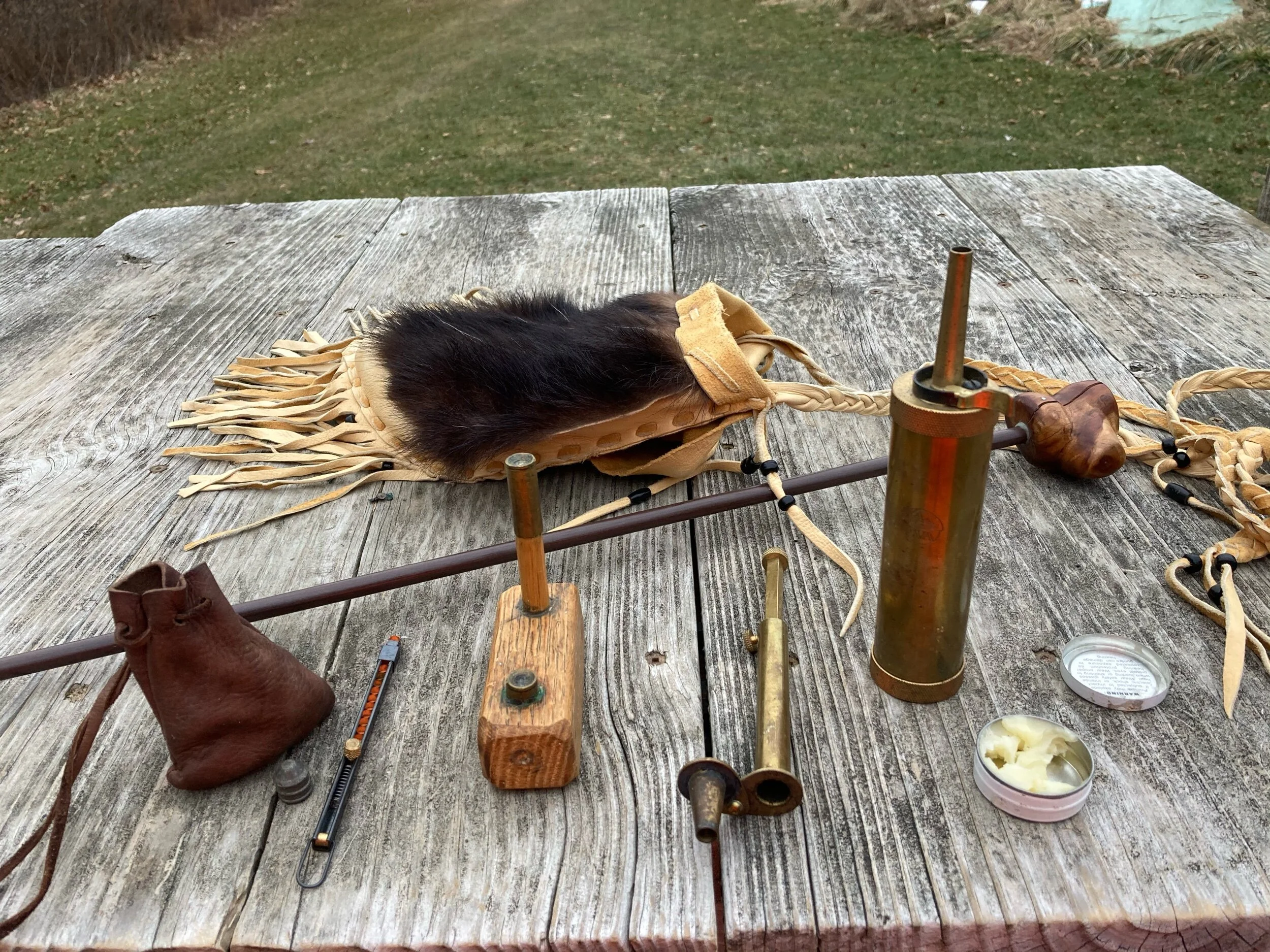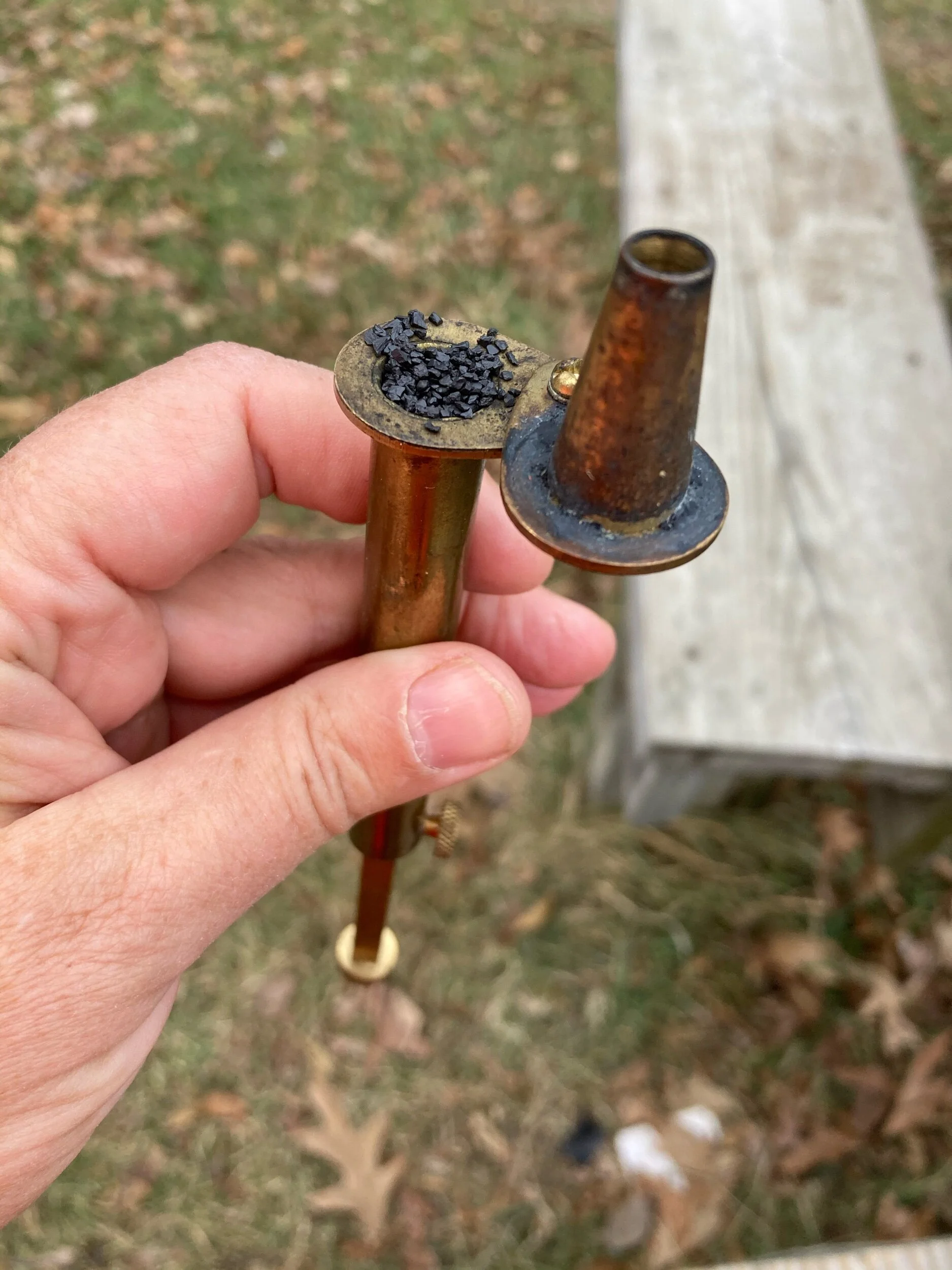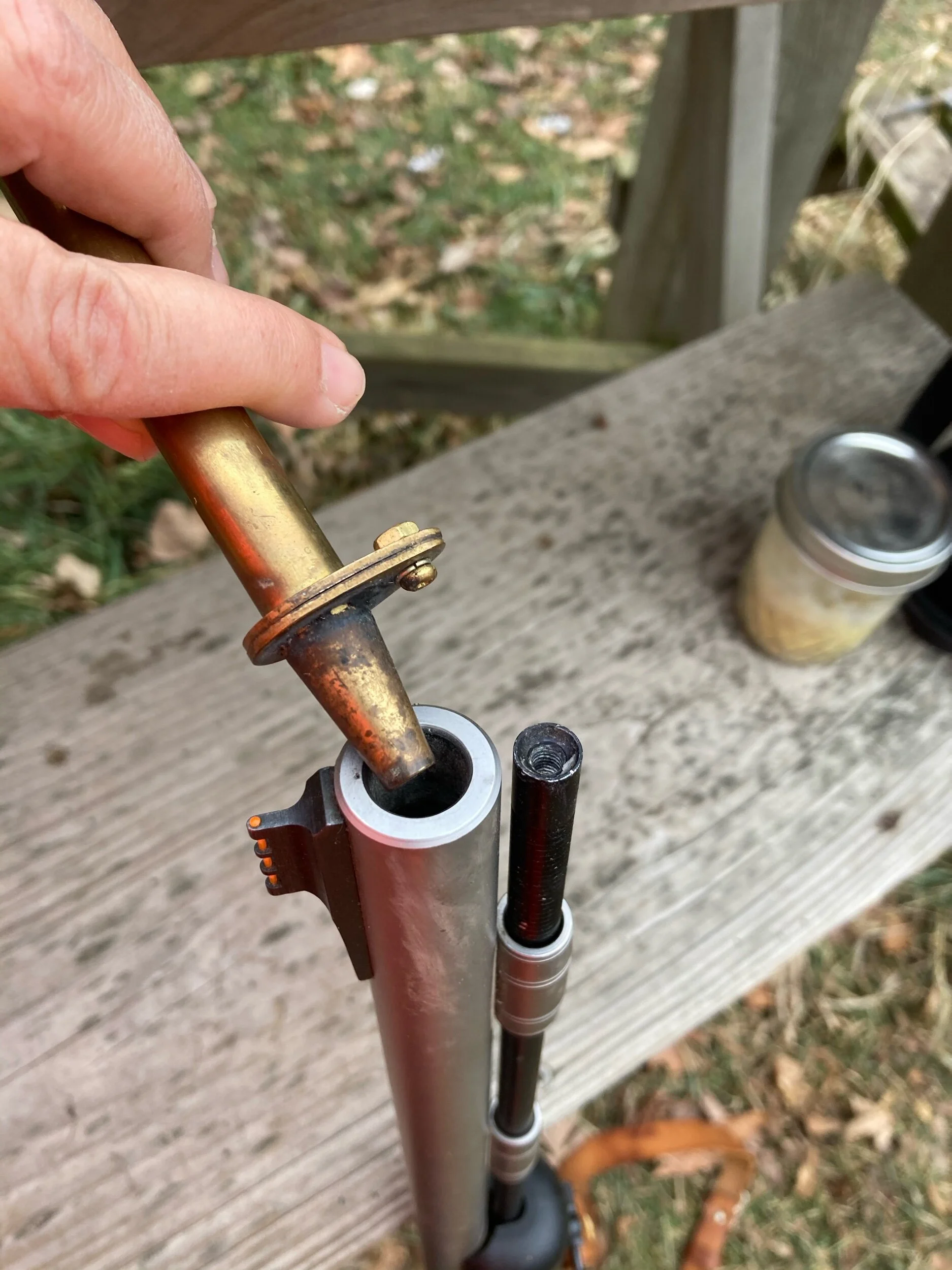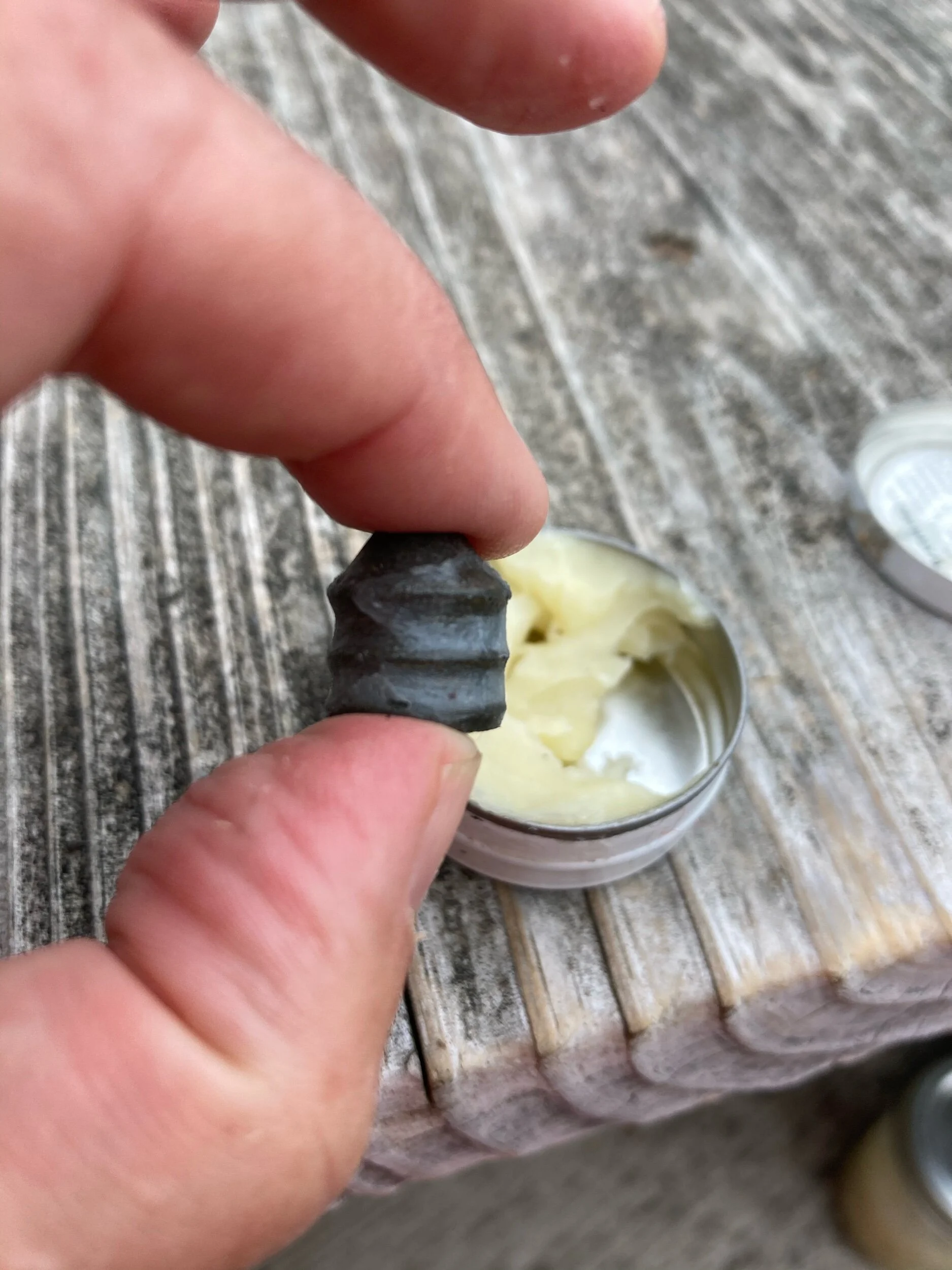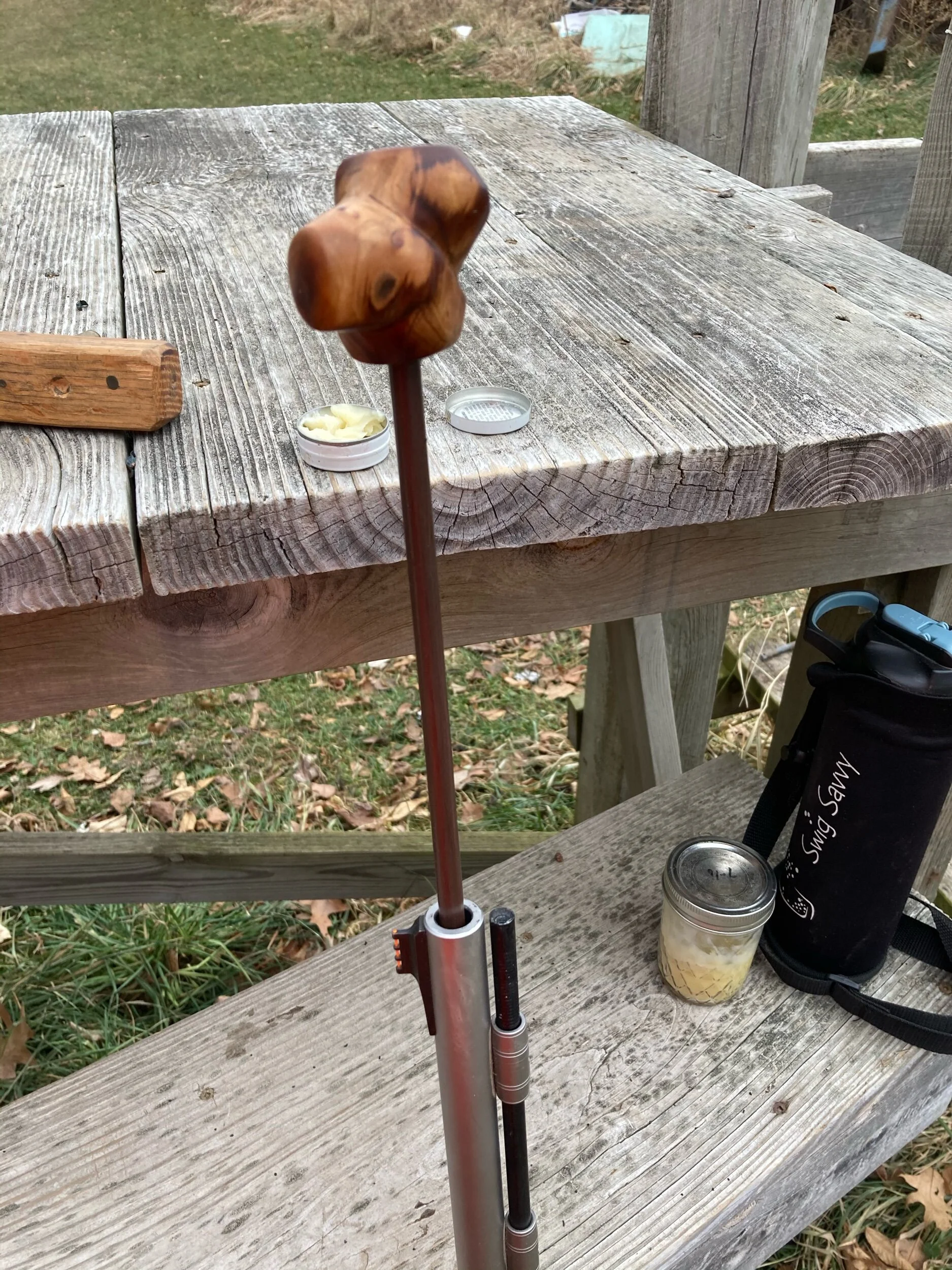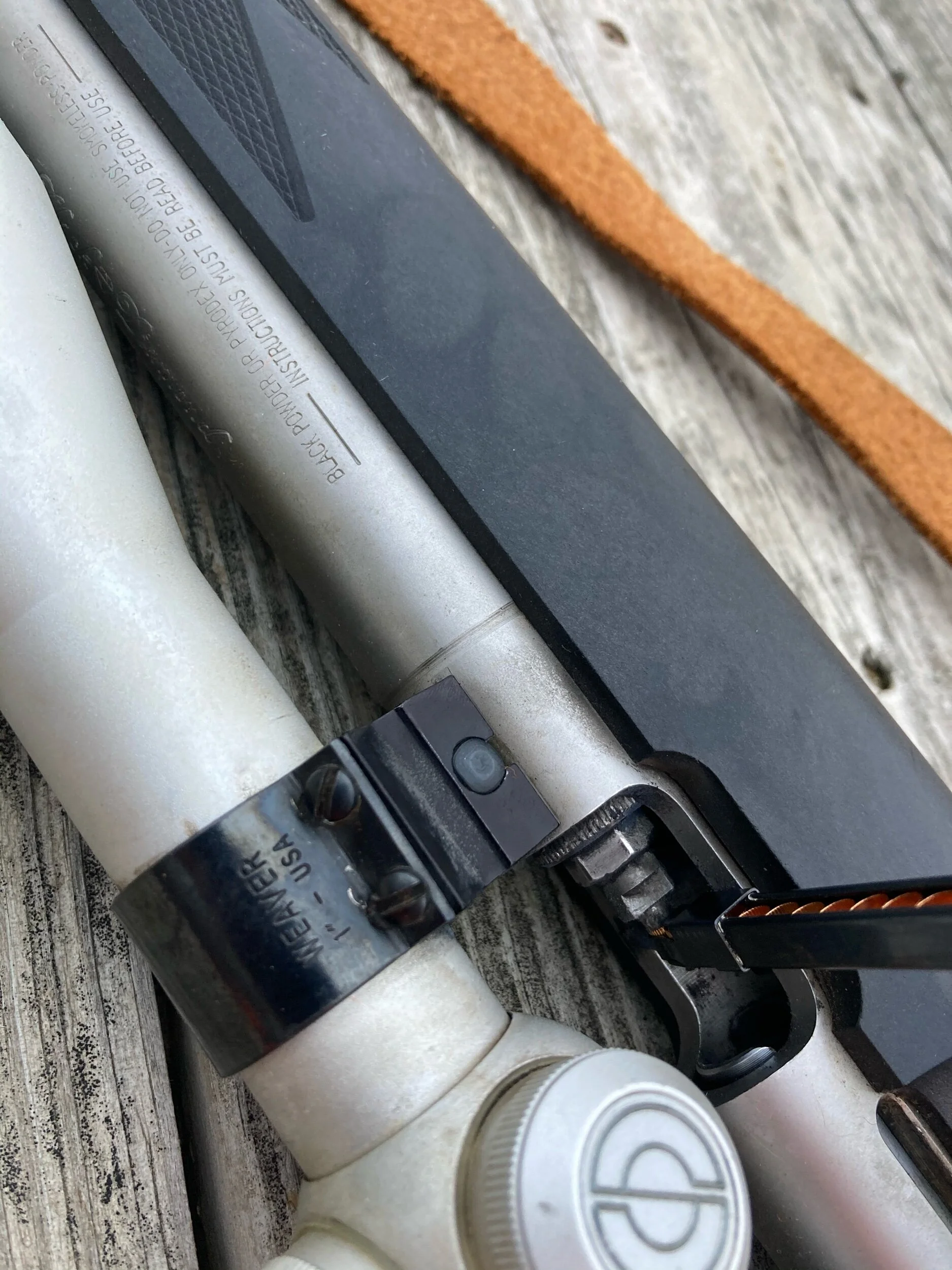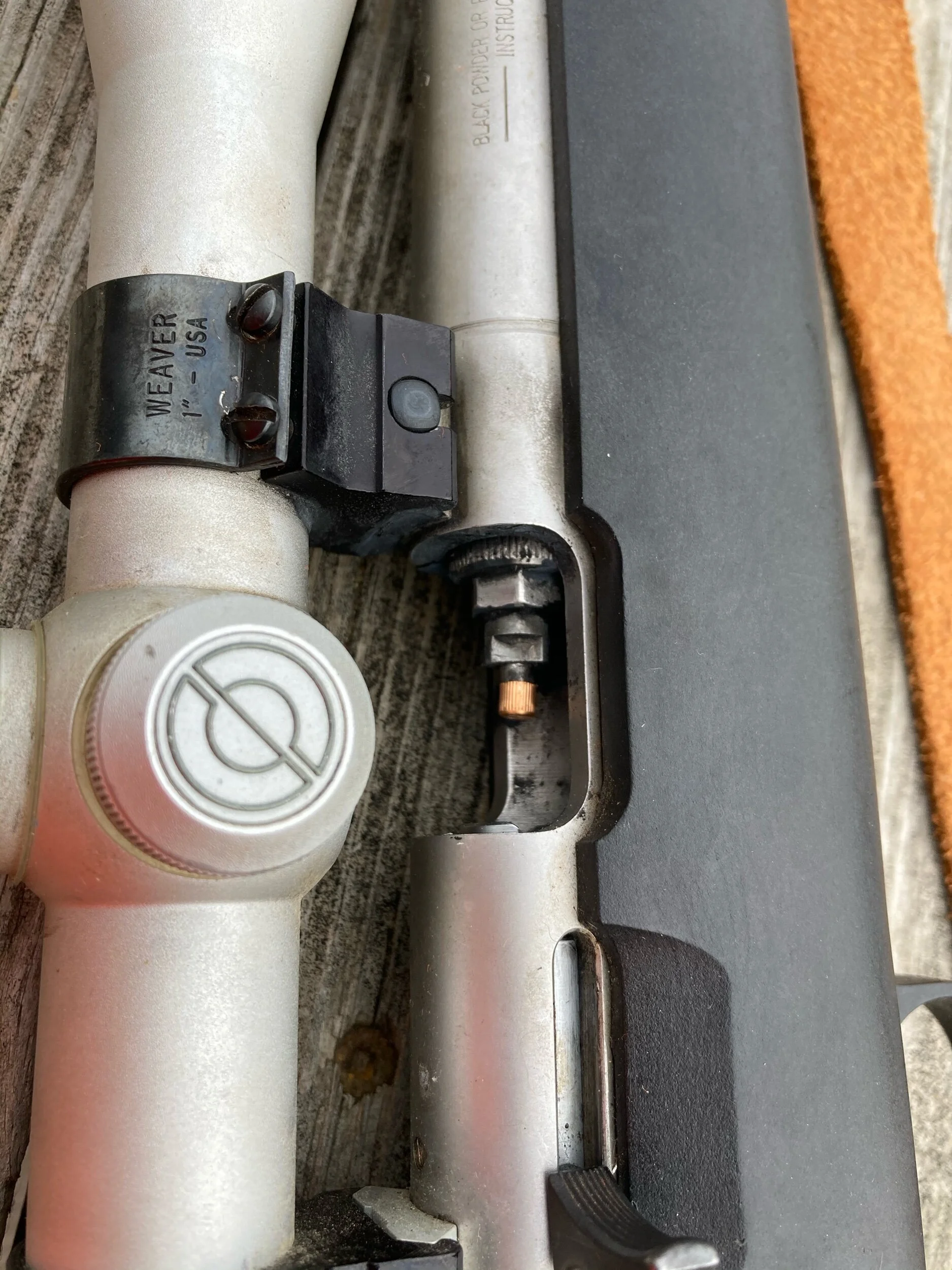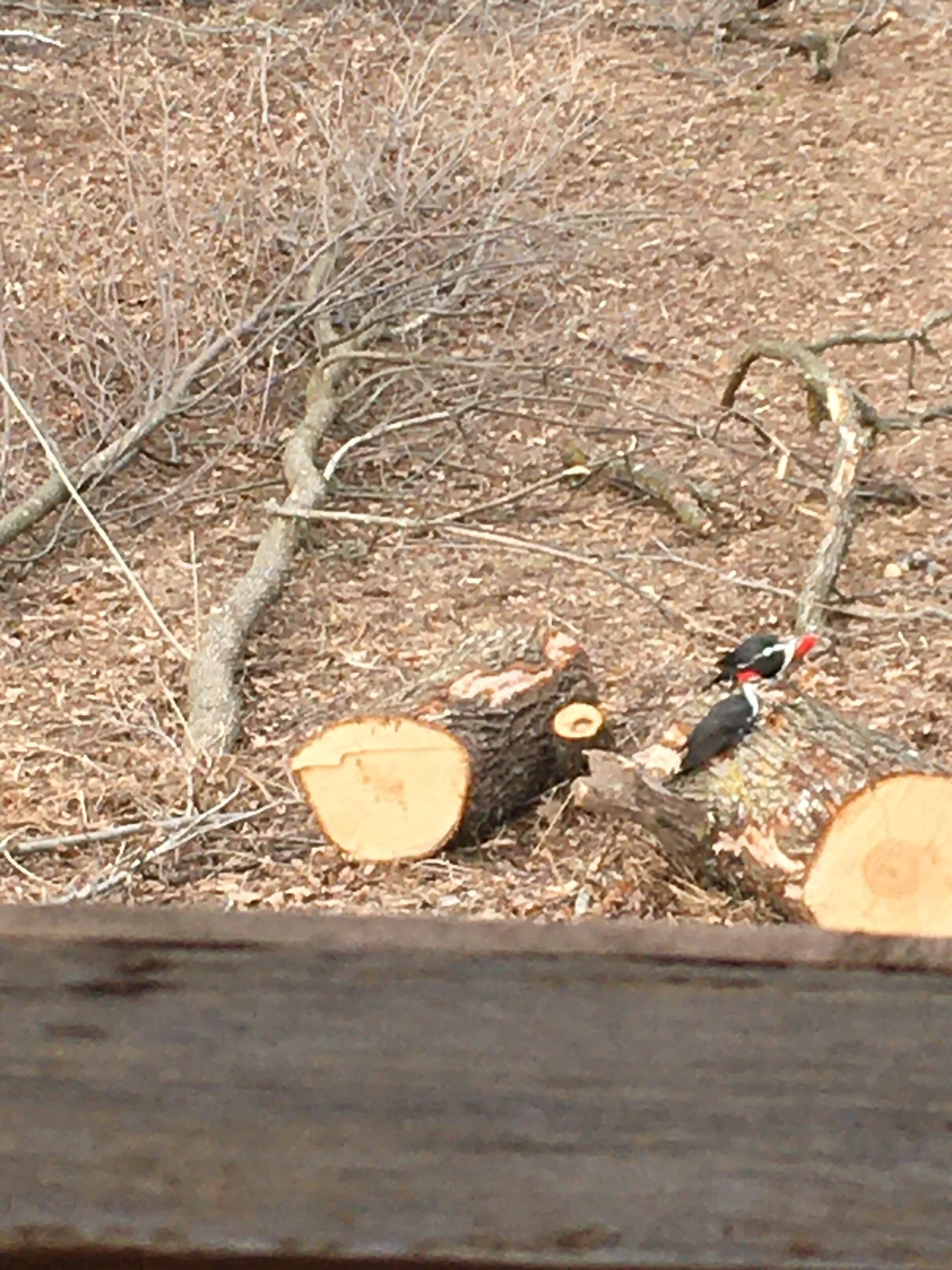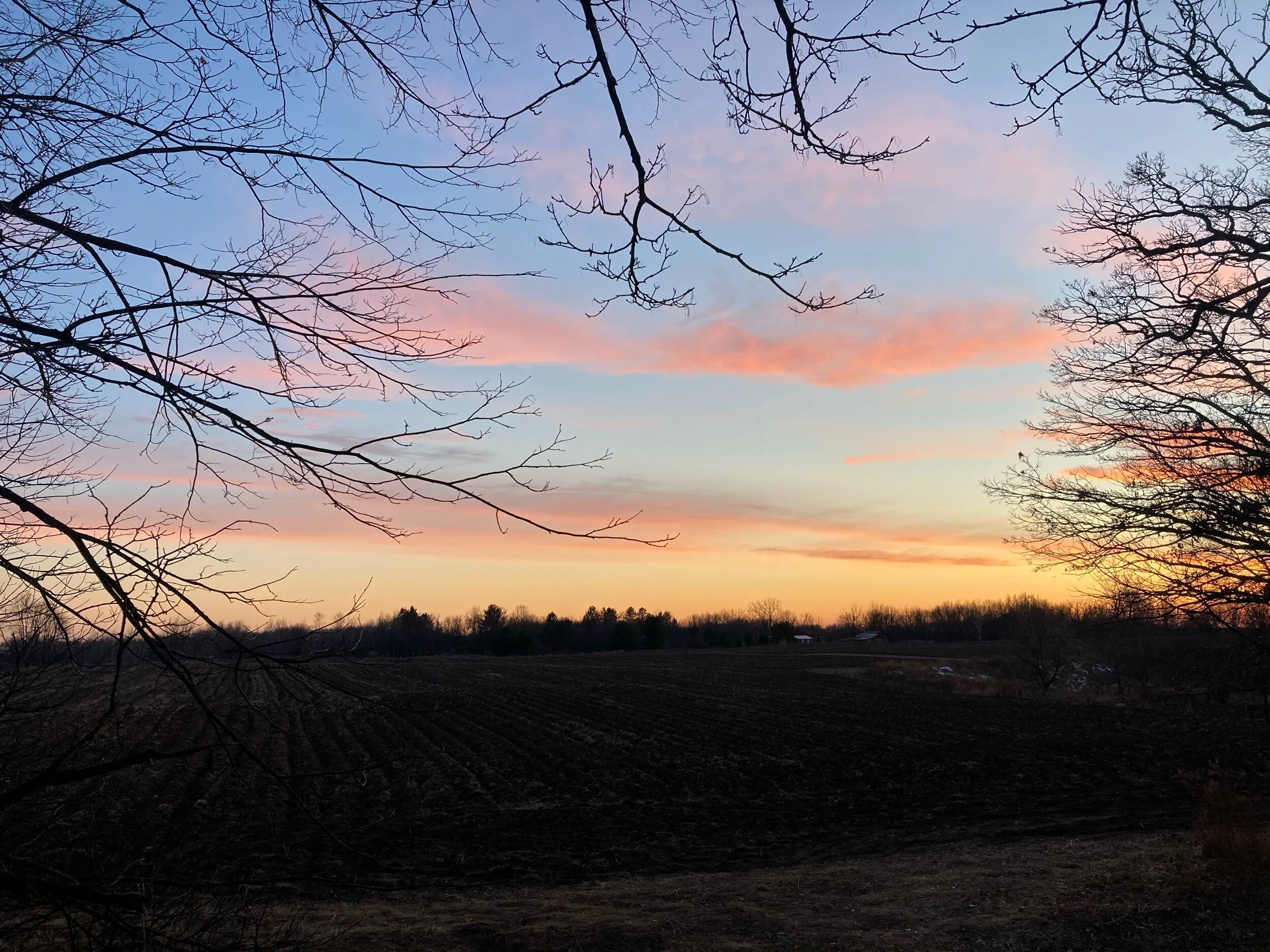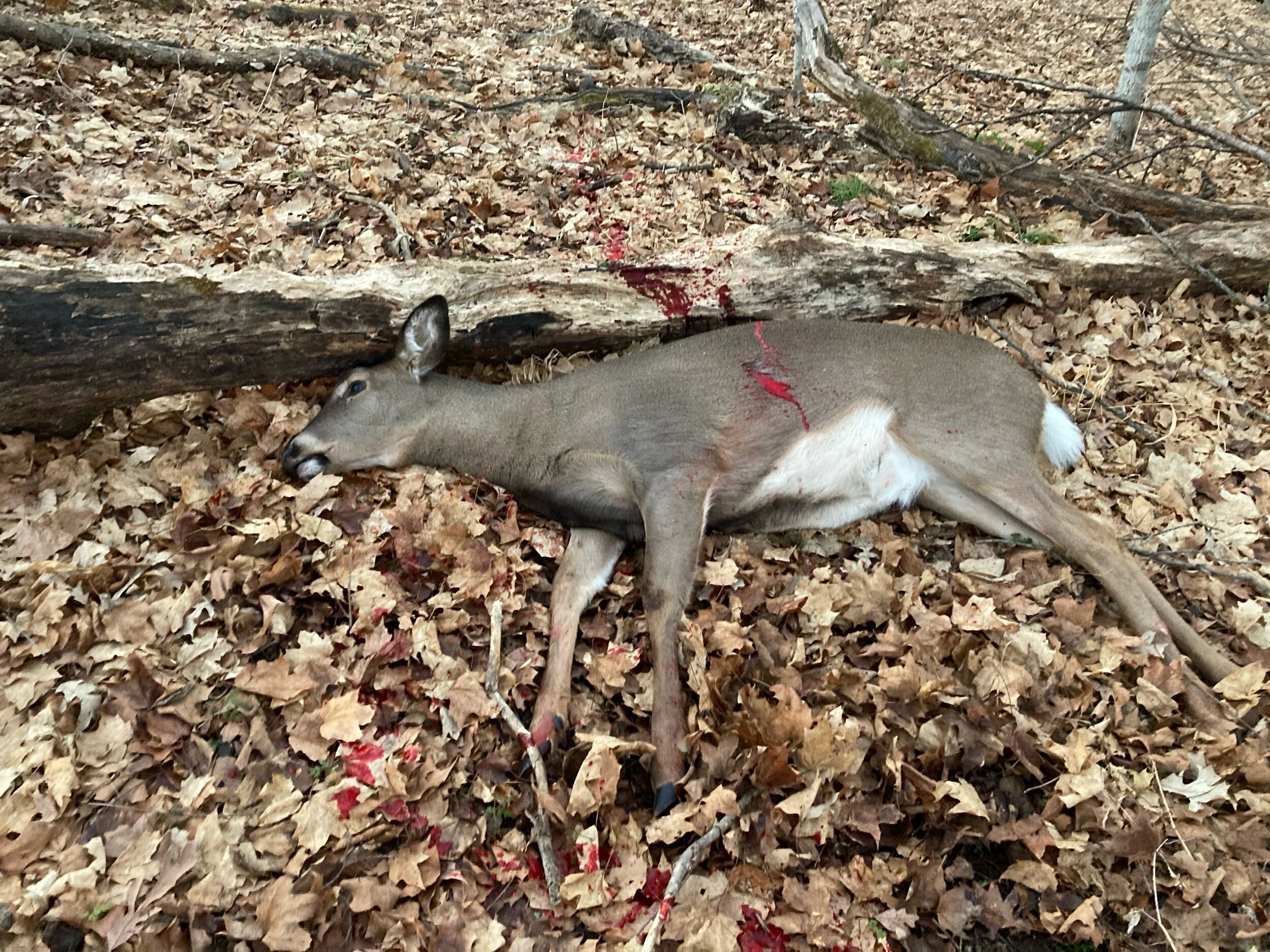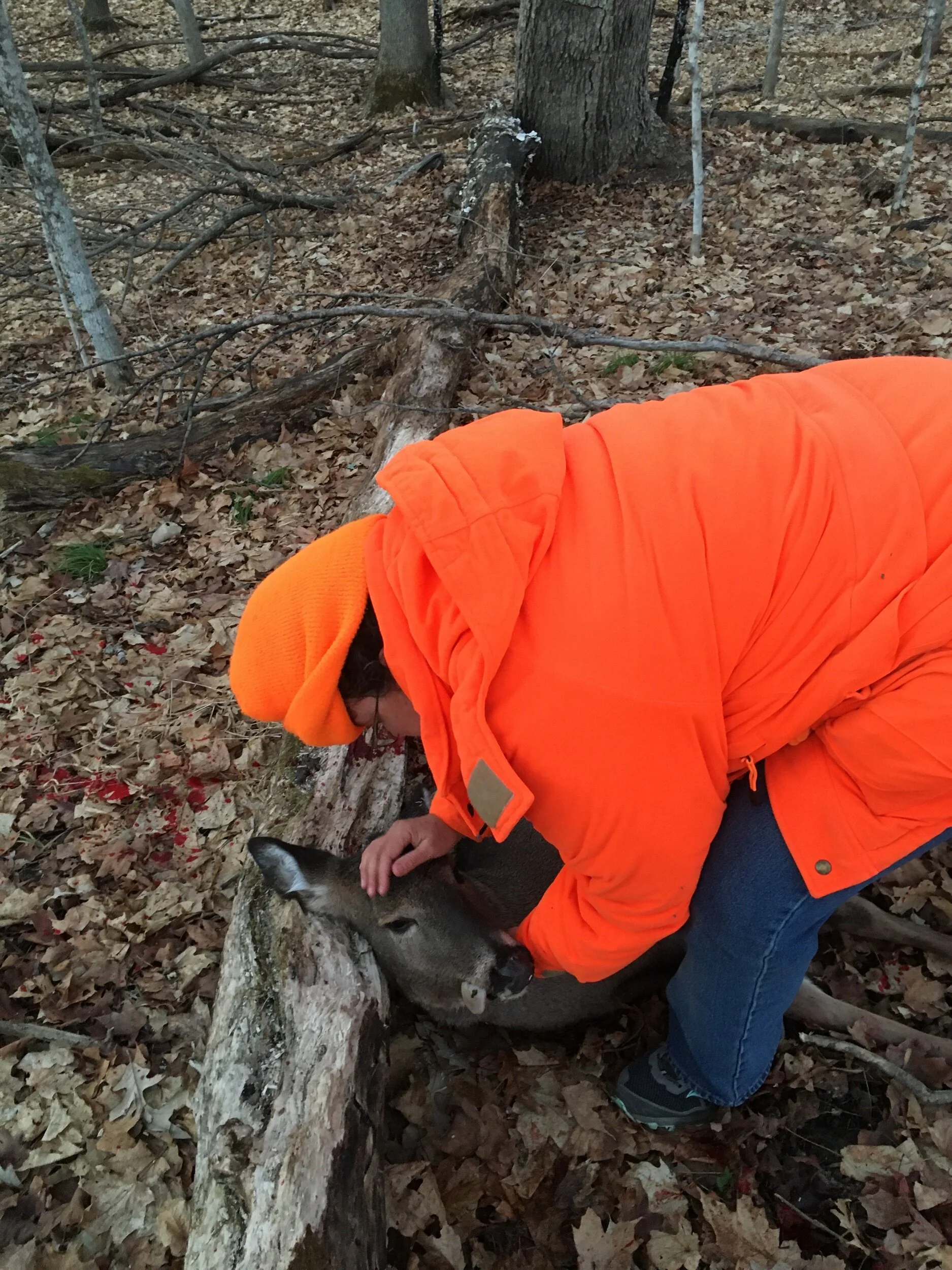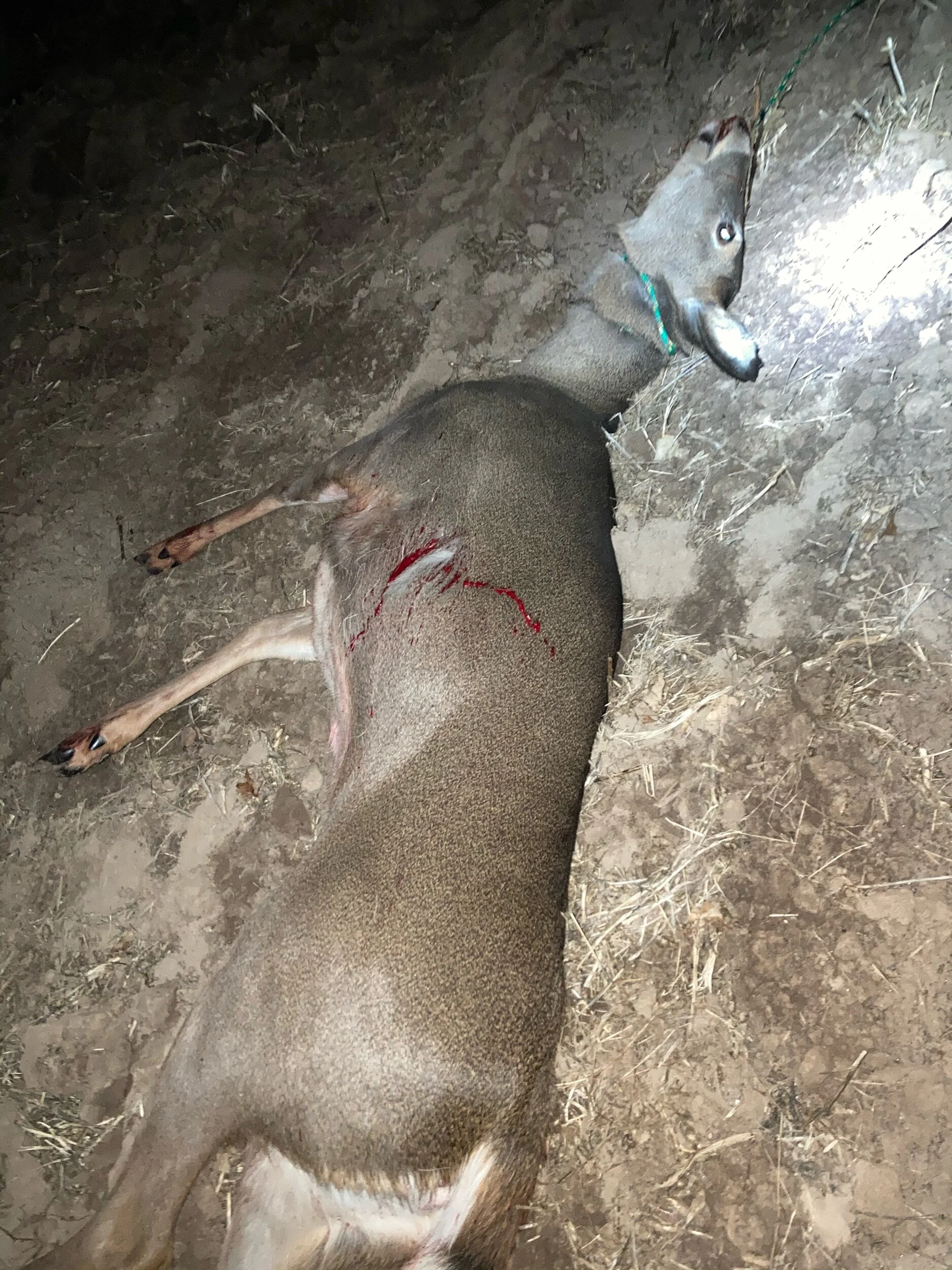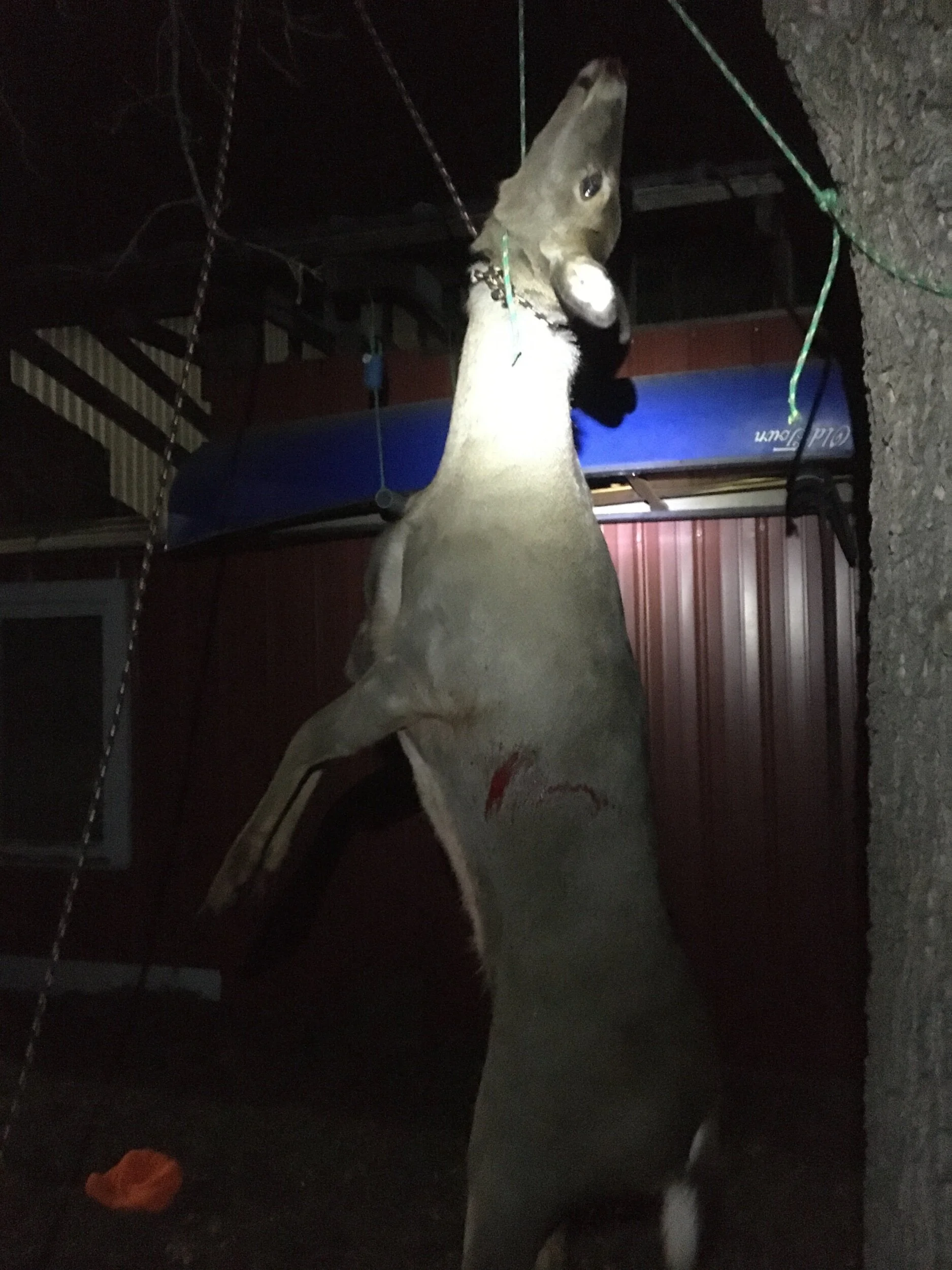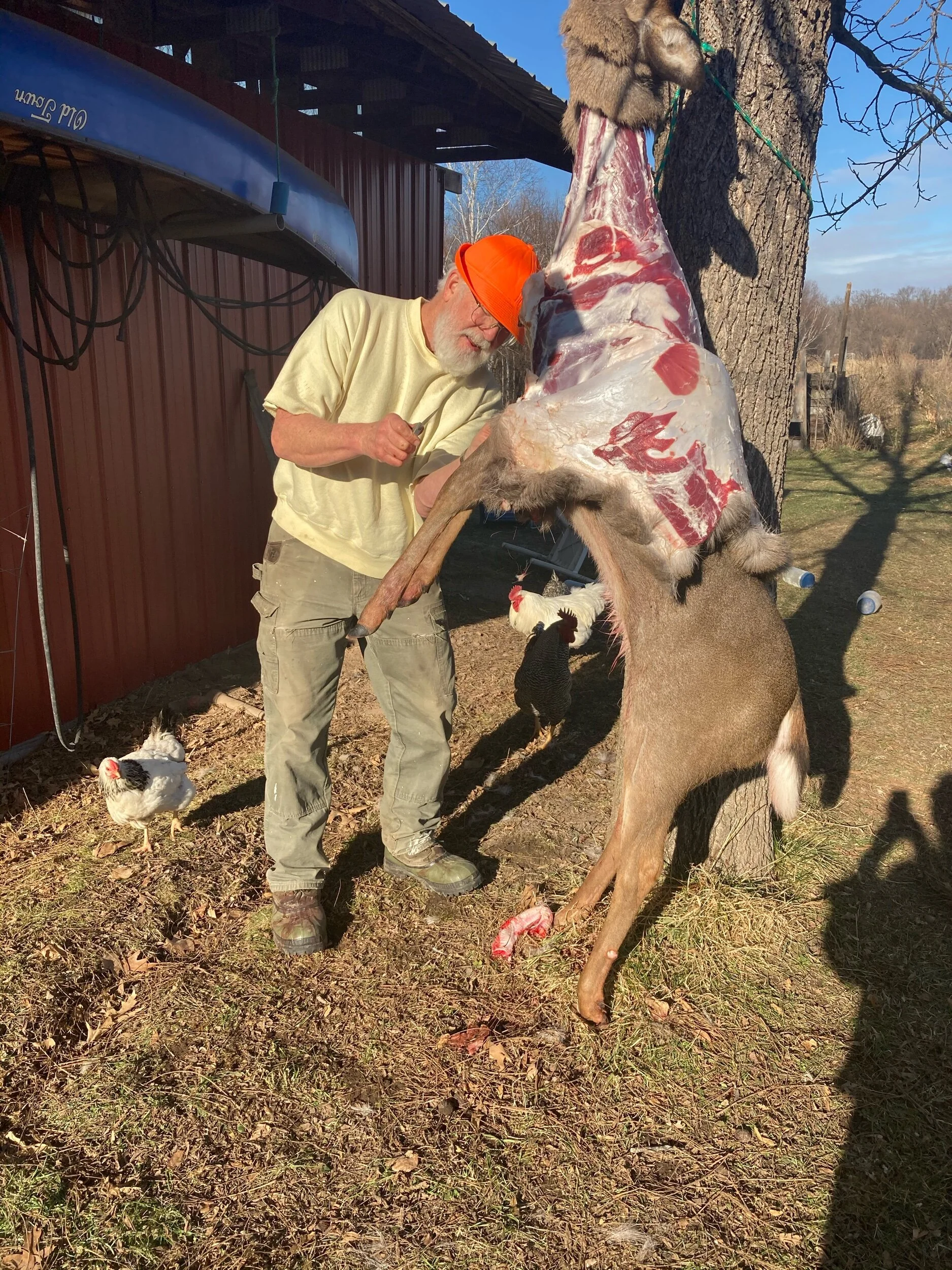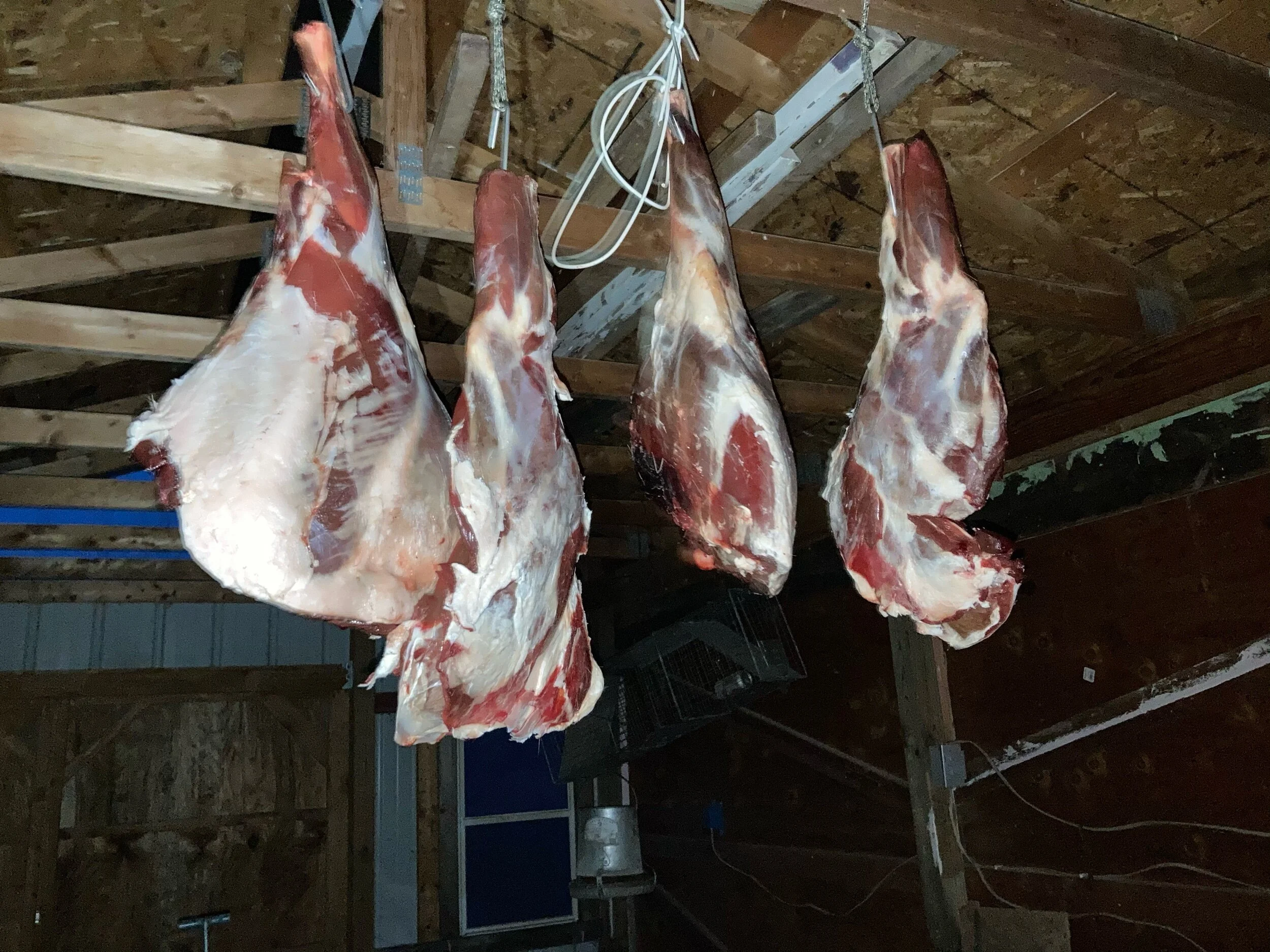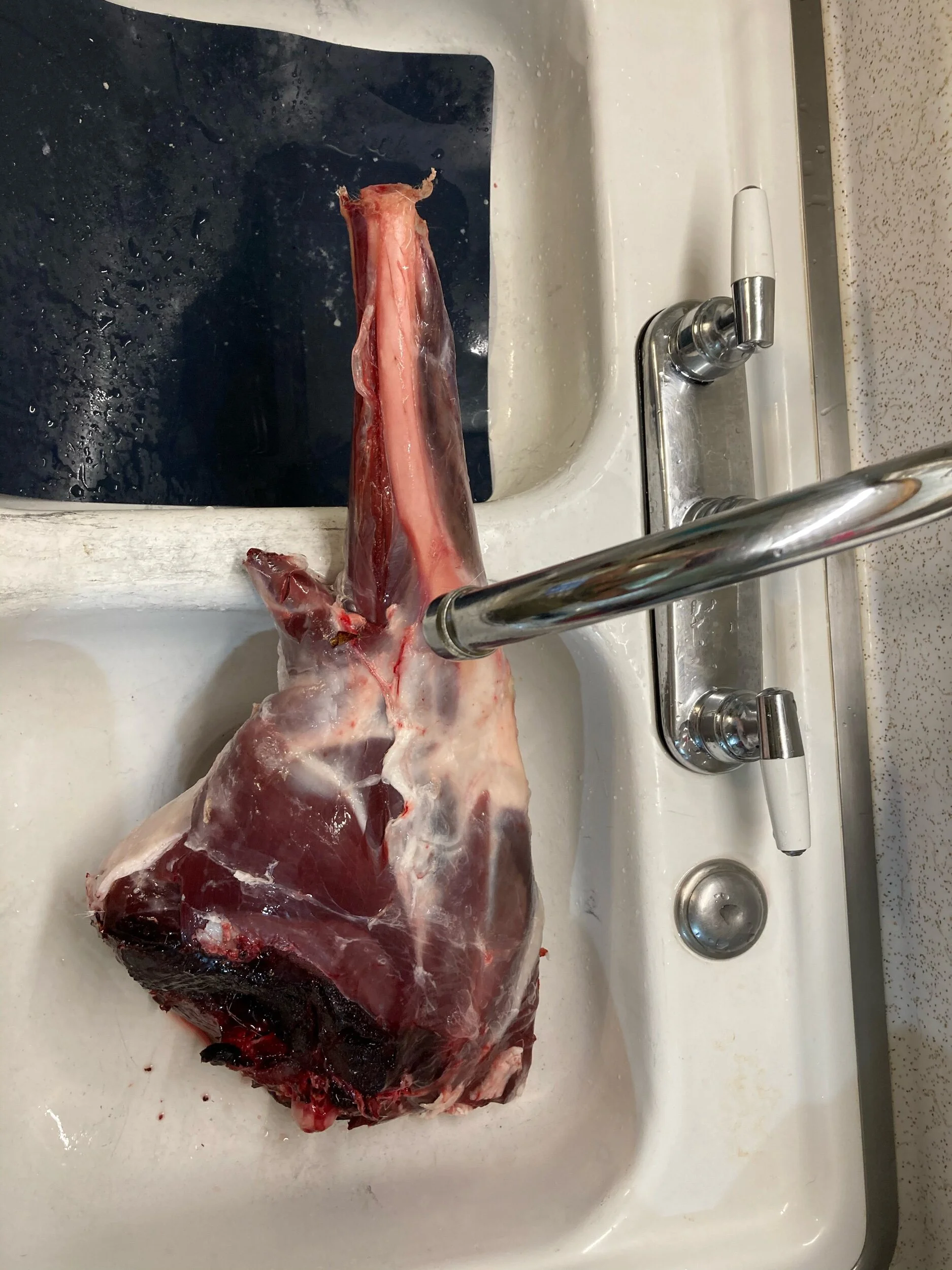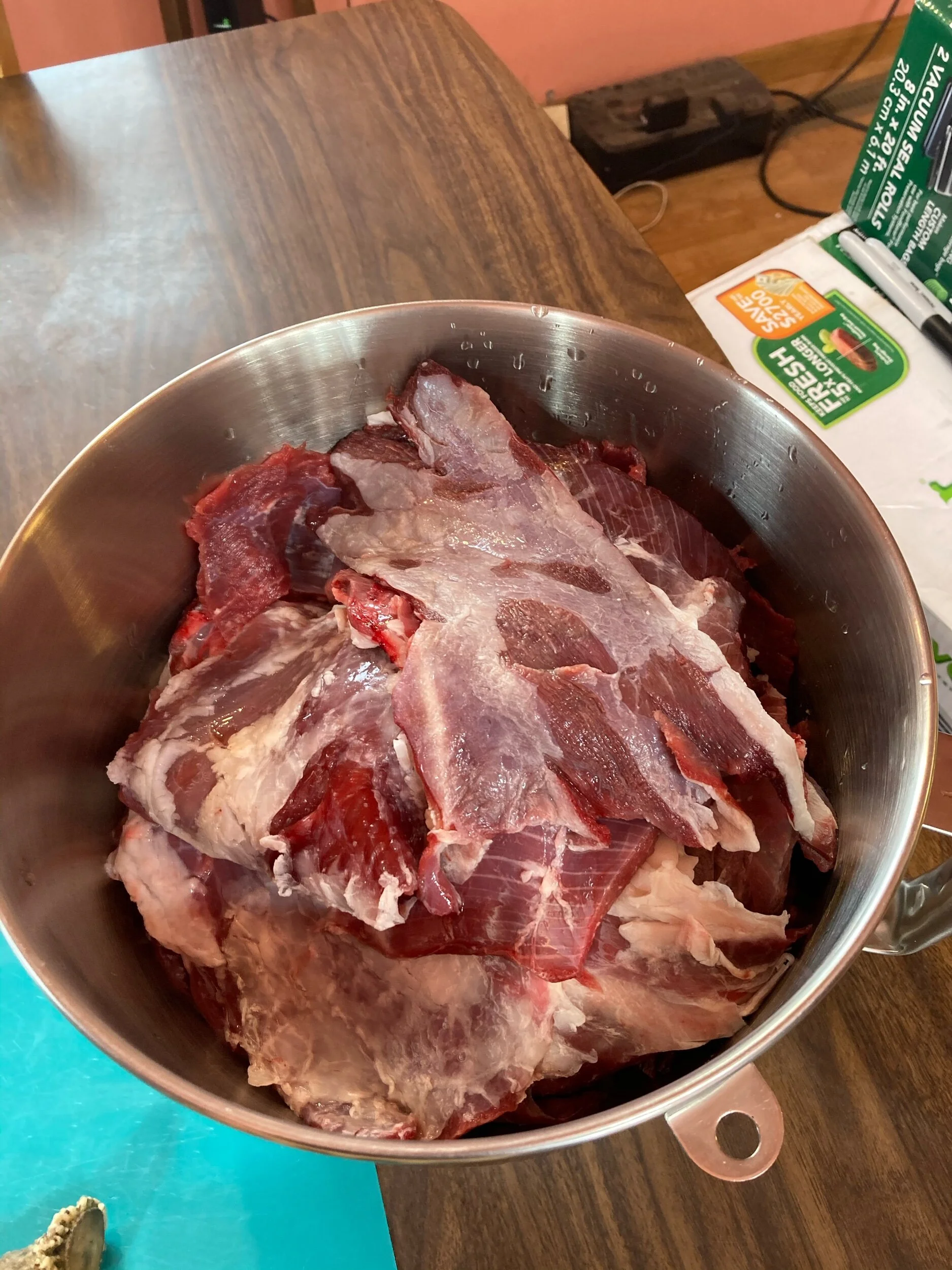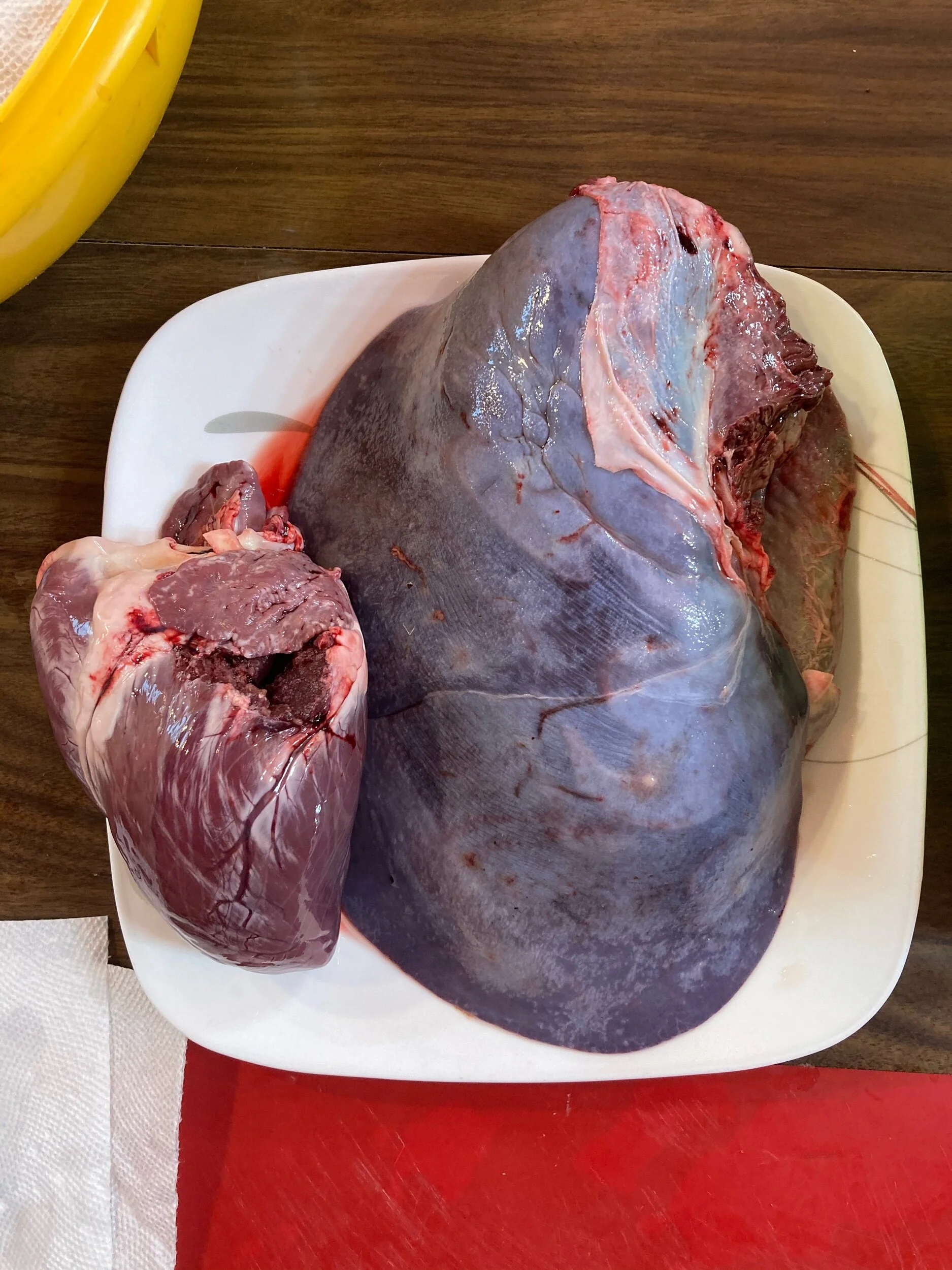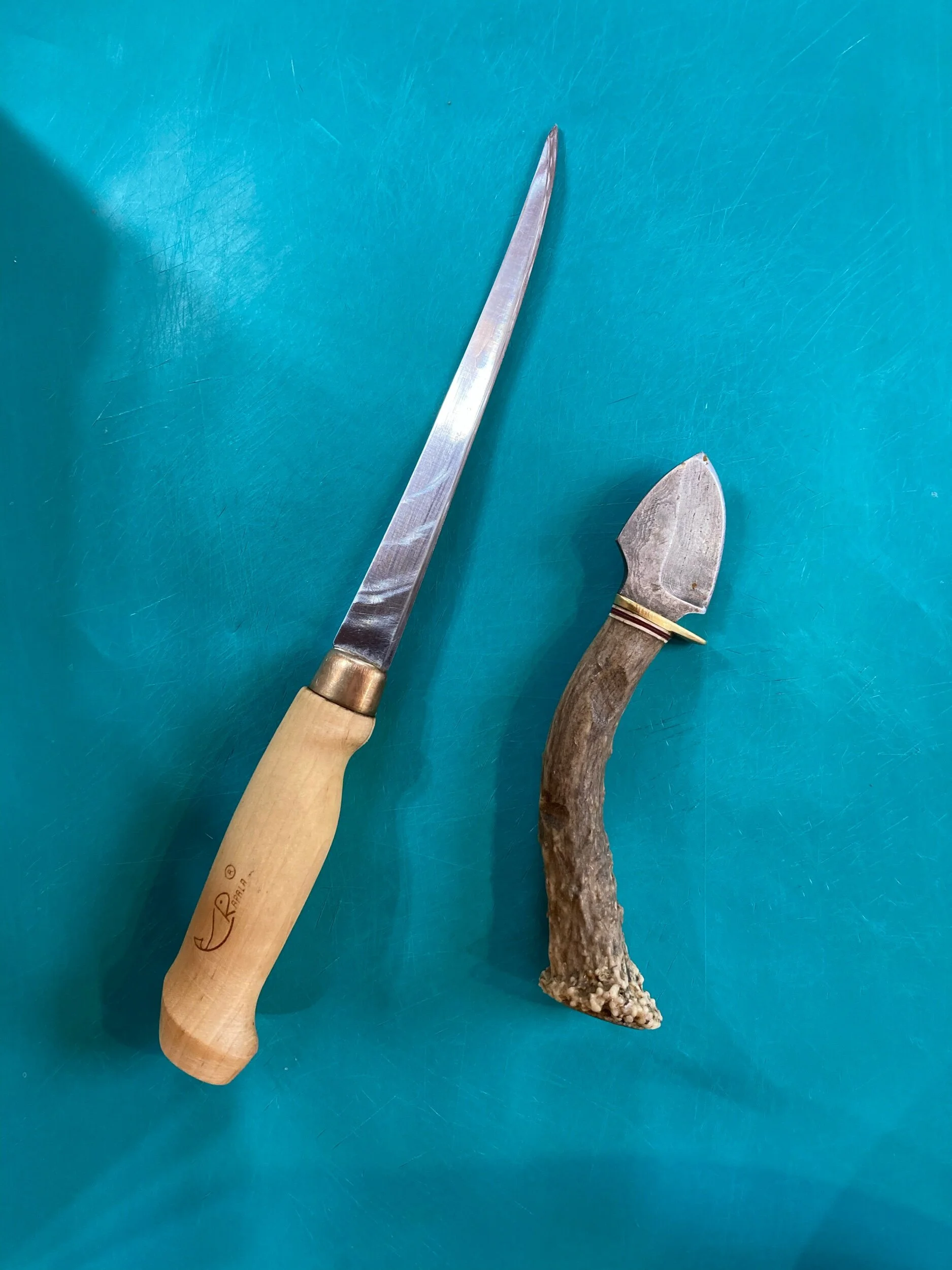Hunting journal: black powder
Eighteen days. One doe. We continue to hunt. We hope for one more. Black powder season ends with sunset, followed by a four day antlerless only gun season. Then we get to take a break from hunting and prepare for hosting the Grand Girl and her parents.
These are the implements needed to load a black powder rifle. Starting from front left: a bag for bullets, a .50 caliber bullet, a batch of caps loaded into a seating tool, a starter to get the bullet headed down the barrel, a powder measure, a powder flask, and lube. That’s a ramrod in the background, next to a “possibles bag” for carrying all this equipment.
The first step of loading is to pour powder from the flask into the measure. You can see the calibration plunger there below my thumb. Once you have settled on an appropriate charge, the plunger is screwed down so that you get the same quantity each time. The top of the measure scrapes off any excess when closed.
I pour the powder down the barrel.
I smear lube (a bees wax concoction) in the grooves of the bullet, keeping the bottom clean.
I started the bullet and then seated it on top of the powder with the ramrod.
Having a cap seating tool makes getting the cap on the nipple much easier.
The cap in place, the hammer cocked, the safety on.
During gun season, I hunt with a .38 caliber rifle. That designation means the bullet is .38 inches in diameter. The black powder rifle uses a .50 caliber bullet, which means it is a half inch in diameter. The narrower bullet comes out faster because powders that go into cartridge cases burn faster, creating more pressure to push the bullet out of the barrel. Although the black powder bullet goes slower, it delivers about the same amount of energy because it is bigger and heavier. Black powder sounds more muffled than a smokeless powder due to the pressure differential. An advantage of a rifle that shoots a pre-made cartridge is that it loads fast, which means you may get a second shot. With black powder, you had best be absolutely certain of your first shot.
I am now including a lovely pair of pileated woodpeckers so that anyone who does not care to see what happens to a deer harvested with a black powder rifle can stop reading/looking now.
A lovely sunset. Really, you can stop looking now if you don’t like to see the venison production process.
This girl stepped into the clearing 50 feet below my deer stand about 15 minutes before sundown. She was wandering down the hill away from me, which means my bullet went through her lungs and made a very large hole in the top of her heart before coming out the right side of her chest. I didn’t hear her coming but only saw her ghosting out of the brush. She ran about 30 feet before collapsing. The chest exit wound is why there is so much blood beyond her.
I thanked her for being such a beautiful and careless animal; for feeding me and my family this winter.
We had a quarter mile drag back to the house. Going over the disced field was the hardest part.
We got her in the walnut tree with a stick propping open her chest cavity to cool her overnight.
Michael helping her off with her coat the next day.
All of her legs (the quarters) went into the tractor shed, waiting to be boned out into edible bits.
I clean the sinks with a bleach wash to sanitize them before washing hair and dirt off the big pieces. The back haunches will give us roasts and stew meat. The front quarters will go towards burger and sausages.
I free the meat from as much fat as possible. This will become burger.
I render the fat on the stovetop, starting with raw fat covered with water, then slowly simmering until the water is gone and the fat cooks down into cracklings. The chickens love them. We strain the tallow to make soap.
The back straps made 6 lbs of medallions. Think a fat less equivalent of filet mignon.
We also eat the liver (I take the membrane off and slice it) and will add the heart to our sausage mix. Yes. That is a very large hole the bullet made. It went straight through, leaving no shards. It allowed me to leave the girl’s innards for the crows and eagles without worrying about poisoning the scavengers.
Having sharp knives makes me happy. We own an amazing array of knives. We use them all.
The doe’s hide will go to a collection bin run by a local charity. The bones will be burnt in our garden, adding calcium and charcoal to our soil. Having a midwinter bonfire helps clear our brush piles and is a good way of keeping diseases in check. Hunting takes a huge amount of energy on many levels. Doing anything worthwhile takes energy. We hope to be able to continue being top level predators for years to come.
